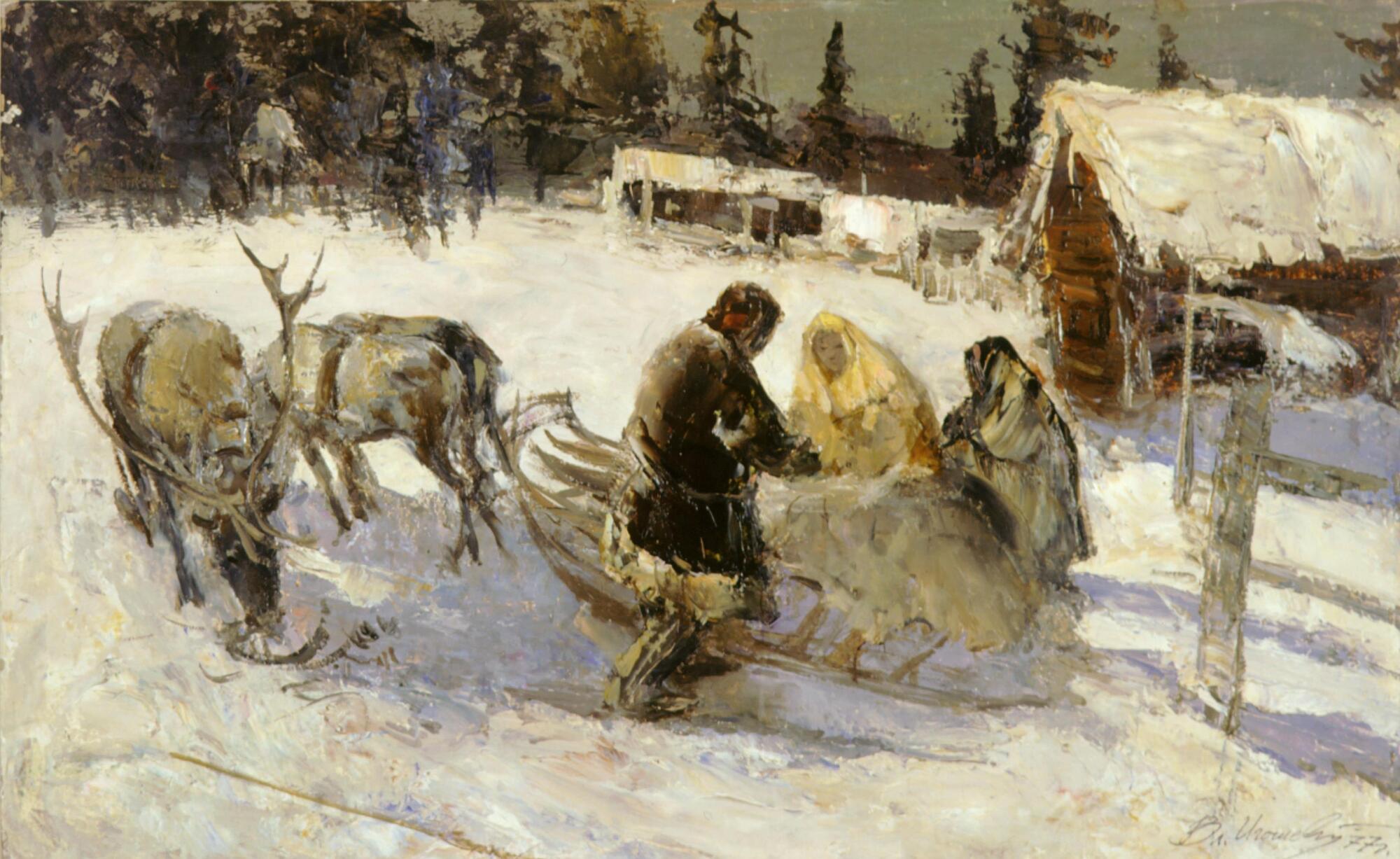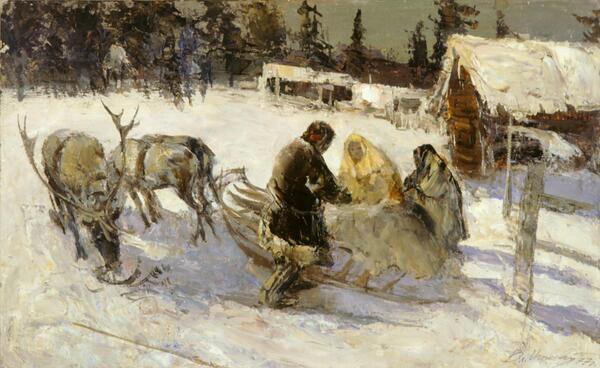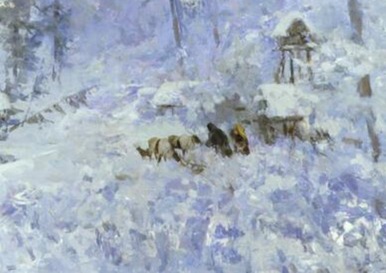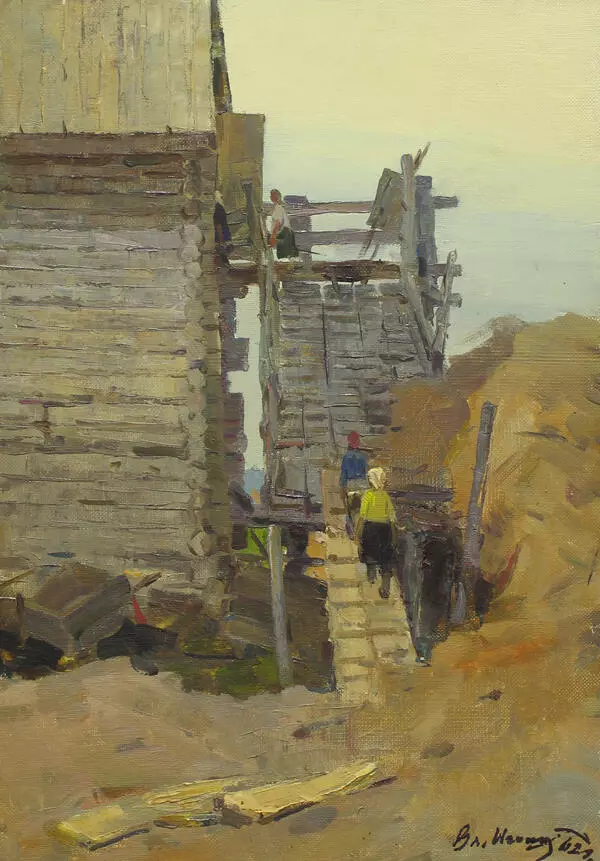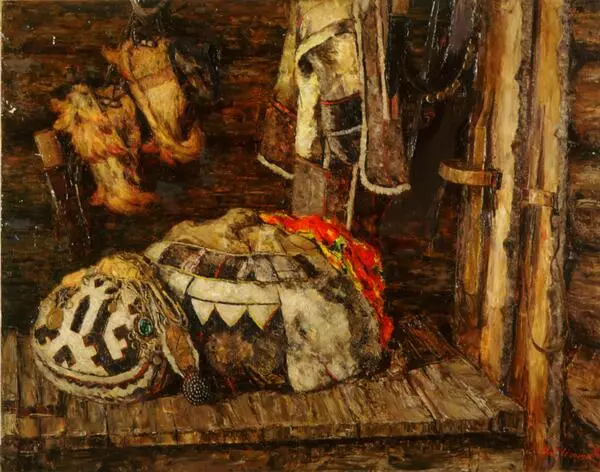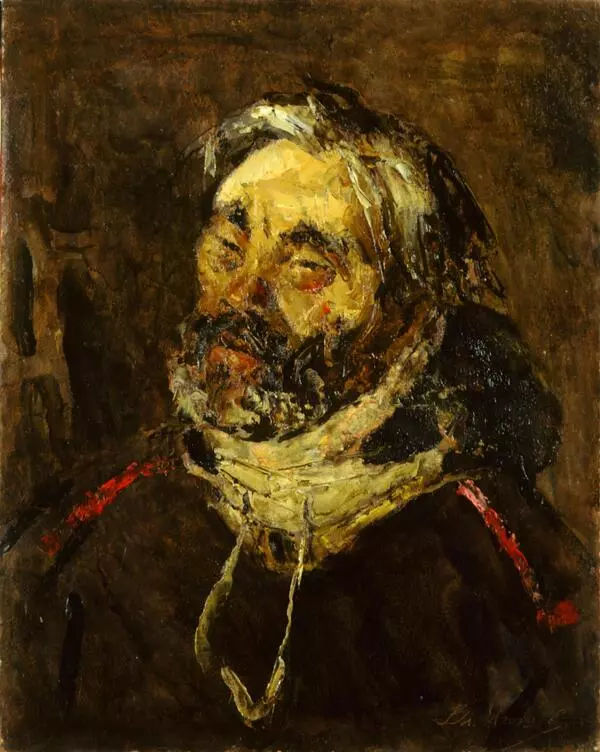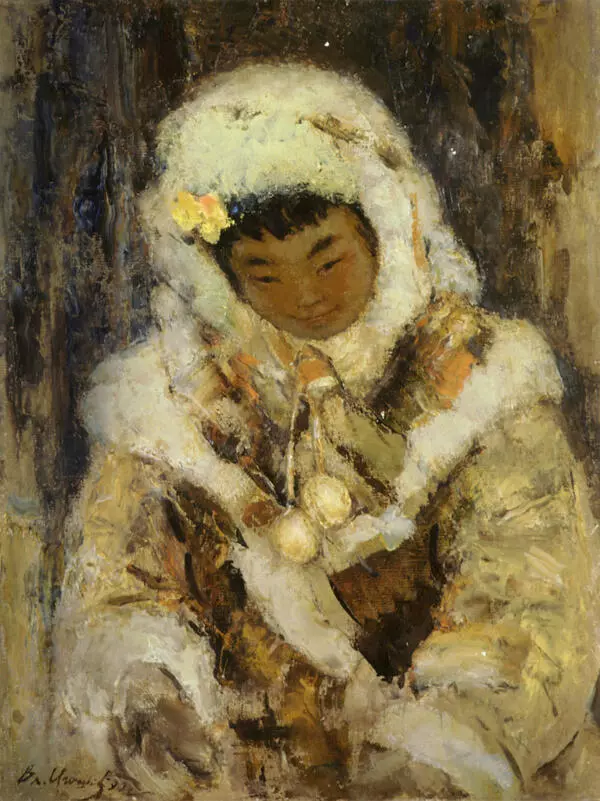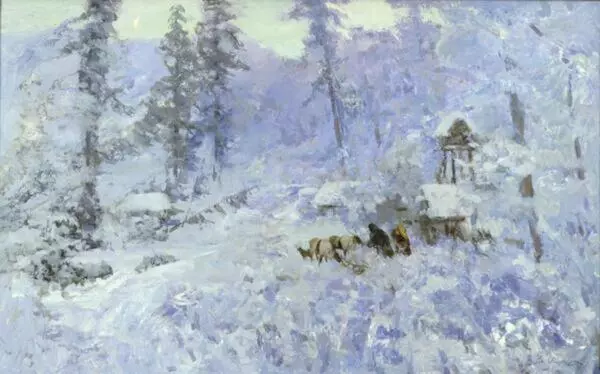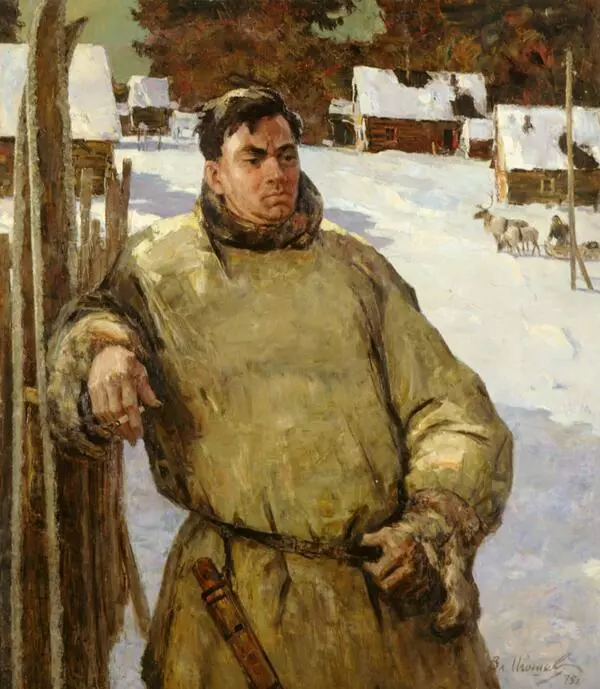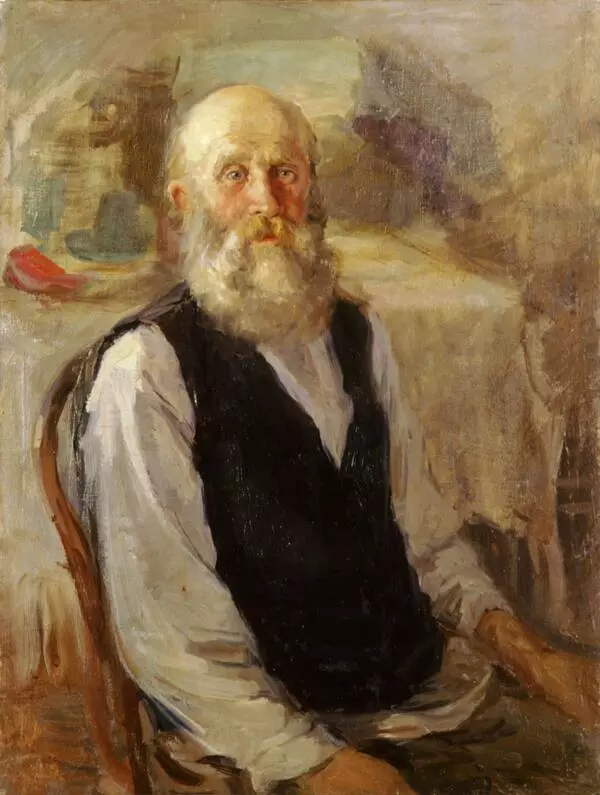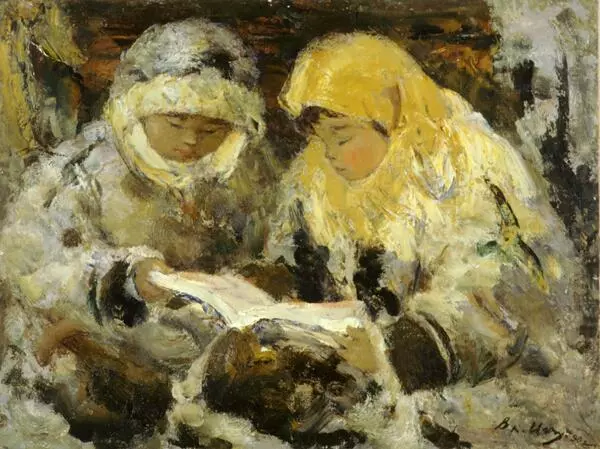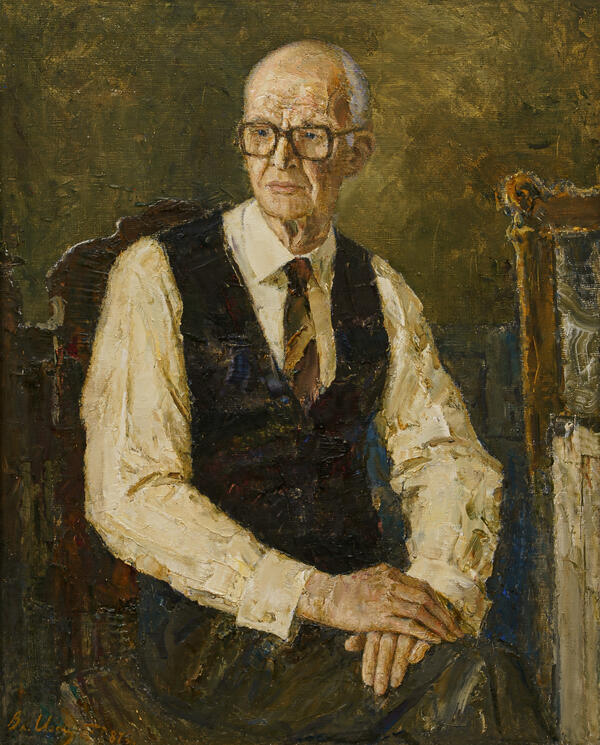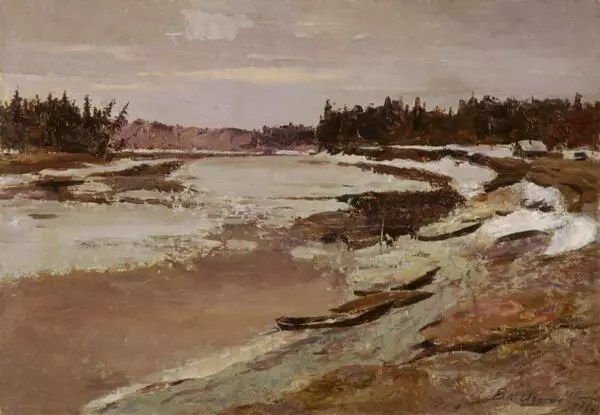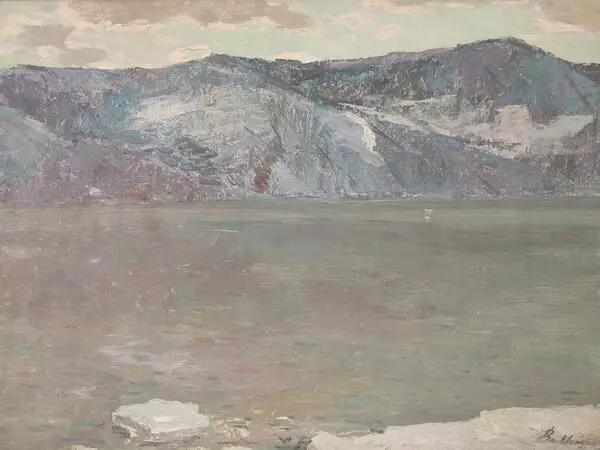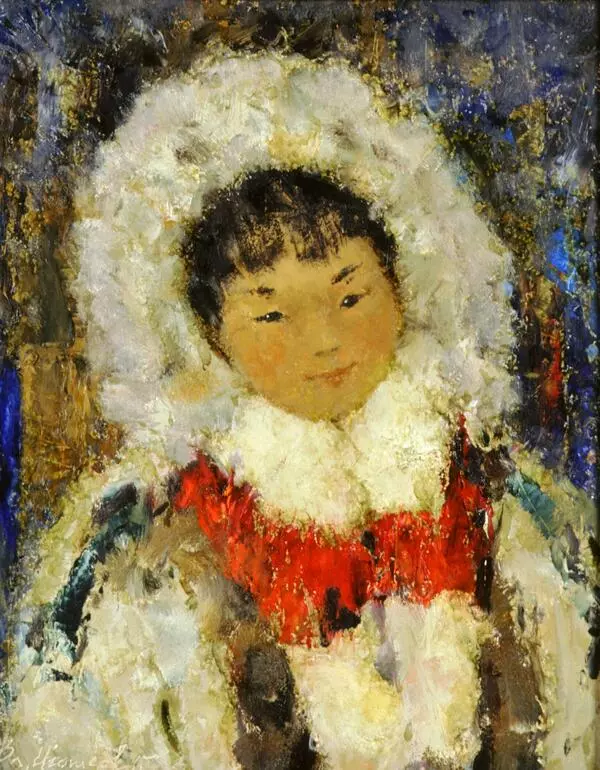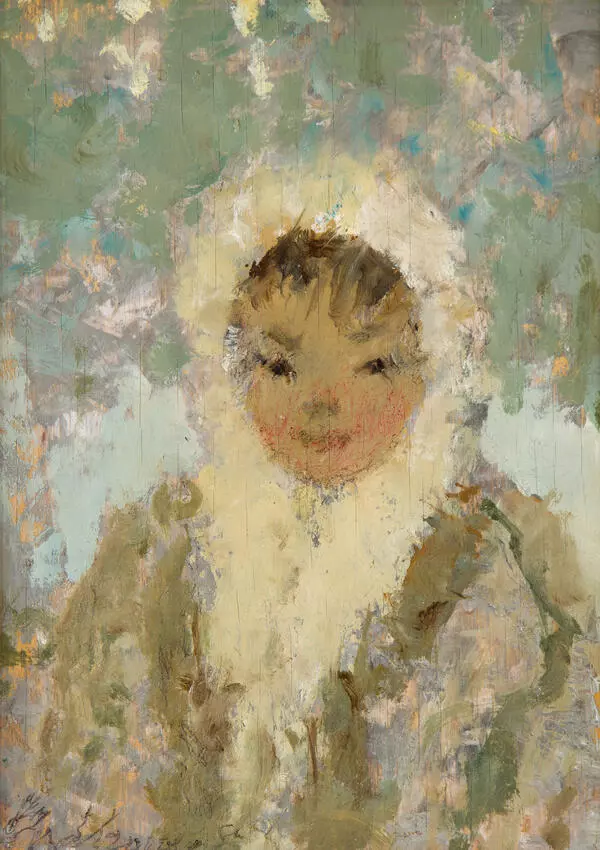The colour palette of the works painted by Vladimir Igoshev in the North mostly consists of warm tones. They prevail in the depiction of the fur clothes, everyday objects and wooden houses. The combination of warm tones with whitish blue and cold white colours, predominant in depiction of the snowy landscapes, creates the rich colour palette. When working on his paintings, the artist sometimes ignored the composition. He didn’t outline the silhouettes either in order not to be a slave of contour. He applied two or three brushstrokes to the canvas and added the rest of the tones around them. Igoshev liked to compare painting with poetry. One good line can keep the whole poem together, just like one brushstroke or a pictorial splotch of colour can define the whole look of the future painting.
In the painting Life is Everywhere the artist depicted one of the scenes he got to see in the North: “I put on a warm fur gus, made myself comfortable in the sledge, and we moved on. Reindeer run fast, the jingle of bells hanging from the necks of reindeer echoes far away in taiga, and the tiny crystals of snow powder sparkle at their hooves. The harness is strained, the reindeer snore gently from time to time. Sometimes, while moving, they grab cold sticky snow with their open mouths. Stepan skillfully directs the sledge. He holds the leading rein in his right hand and a long pole used to drive a team of reindeer in his left hand. He gently pushes the running reindeer with it, exclaiming “Pyr! Pyr! Hey-hey!” We’re moving past snow covered fir trees and larch trees. Sometimes I see the thick deep-green Siberian cedars with their clear and yet mysteriously fantastic silhouettes with spreading crowns. The thick taiga changes to the half-grown forest…’
Reindeer have a remarkable specific feature: their hooves change with the season. During summer, when the soil is soft, the hoof becomes spongy, and in winter the pads bare the edge of the hoof. It taps into the snow or the ice, so reindeer don’t slide. The female animals also have antlers, but in different seasons. Some species can cover around 35 km a day.
In the painting Life is Everywhere the artist depicted one of the scenes he got to see in the North: “I put on a warm fur gus, made myself comfortable in the sledge, and we moved on. Reindeer run fast, the jingle of bells hanging from the necks of reindeer echoes far away in taiga, and the tiny crystals of snow powder sparkle at their hooves. The harness is strained, the reindeer snore gently from time to time. Sometimes, while moving, they grab cold sticky snow with their open mouths. Stepan skillfully directs the sledge. He holds the leading rein in his right hand and a long pole used to drive a team of reindeer in his left hand. He gently pushes the running reindeer with it, exclaiming “Pyr! Pyr! Hey-hey!” We’re moving past snow covered fir trees and larch trees. Sometimes I see the thick deep-green Siberian cedars with their clear and yet mysteriously fantastic silhouettes with spreading crowns. The thick taiga changes to the half-grown forest…’
Reindeer have a remarkable specific feature: their hooves change with the season. During summer, when the soil is soft, the hoof becomes spongy, and in winter the pads bare the edge of the hoof. It taps into the snow or the ice, so reindeer don’t slide. The female animals also have antlers, but in different seasons. Some species can cover around 35 km a day.
